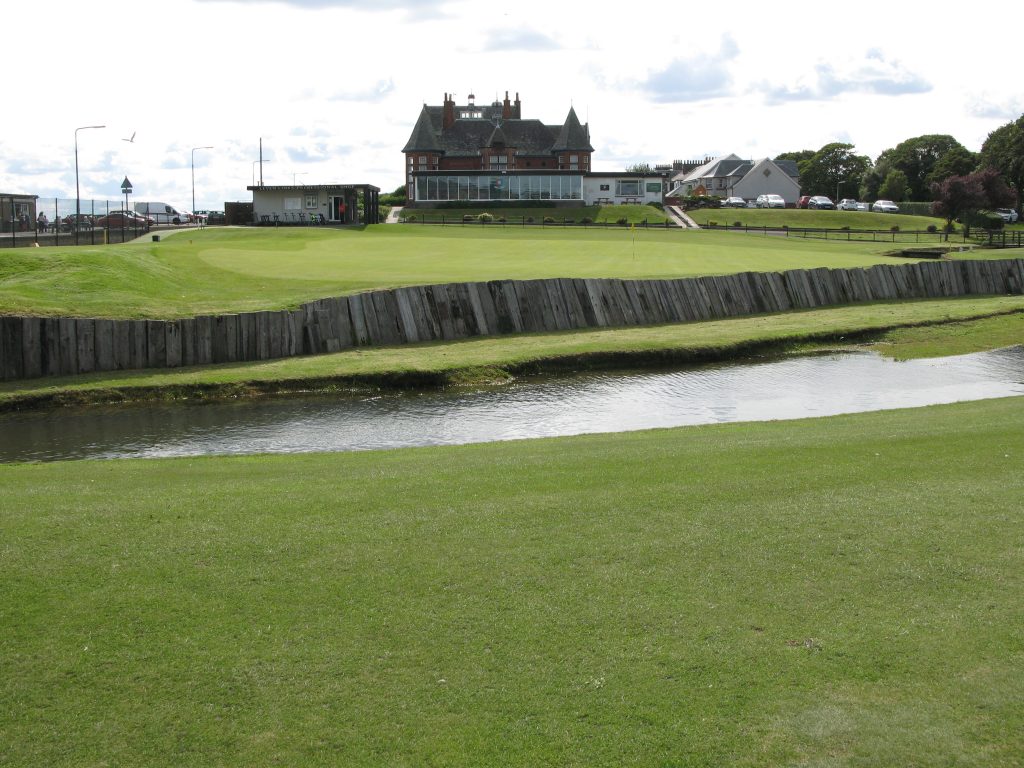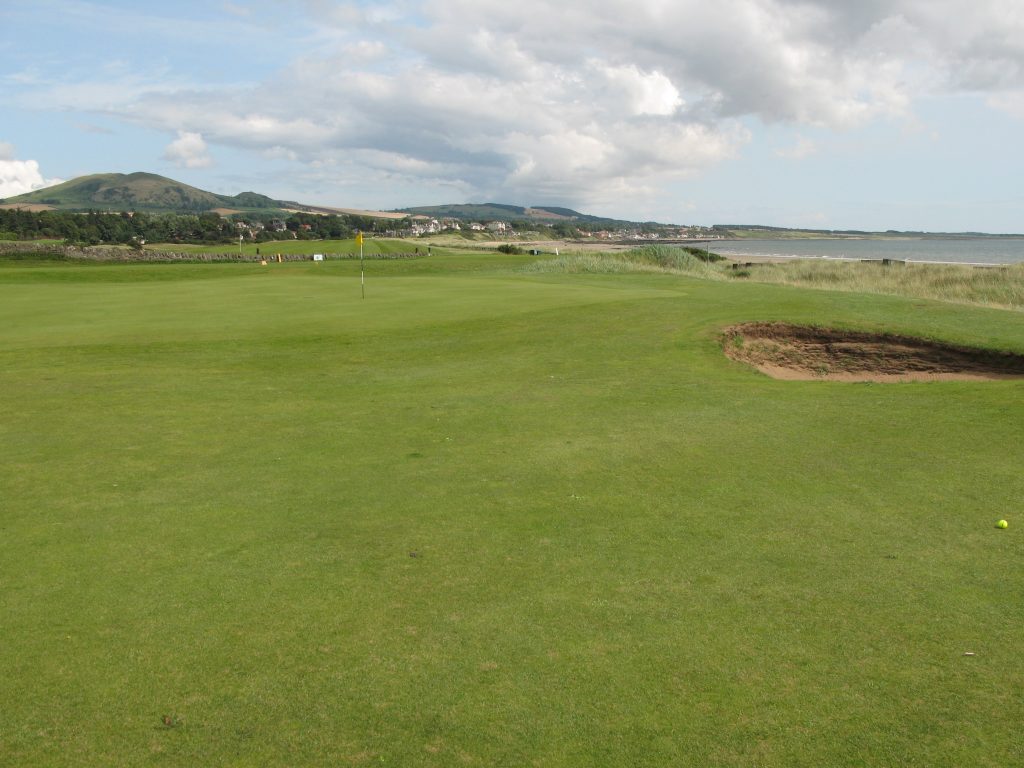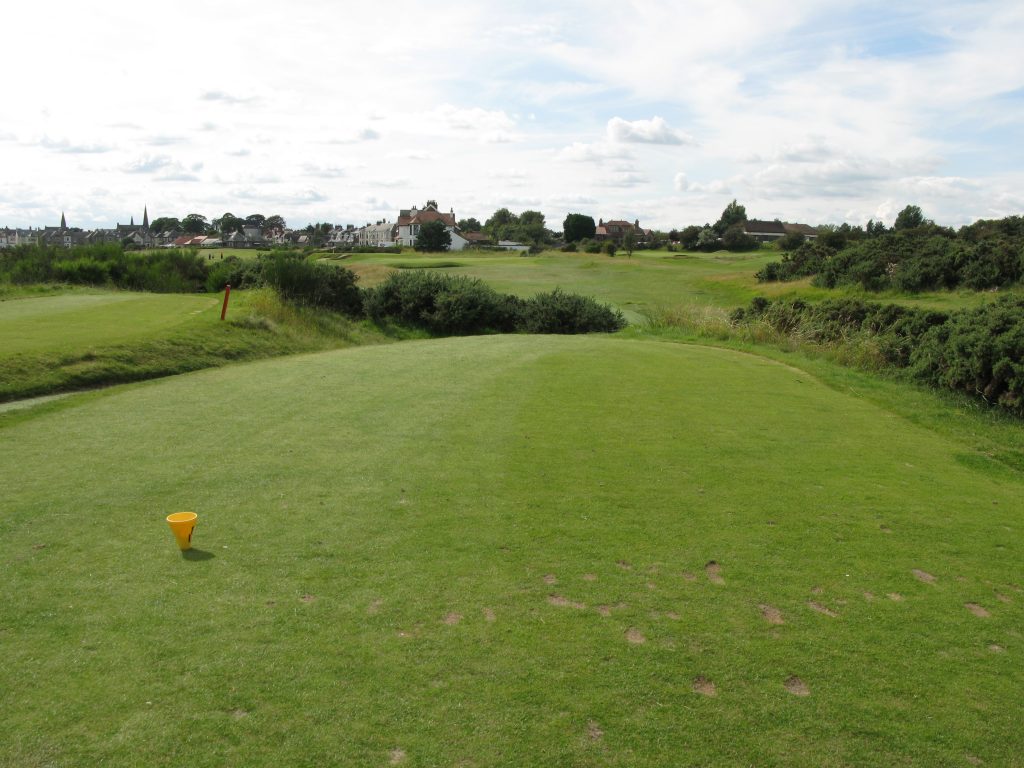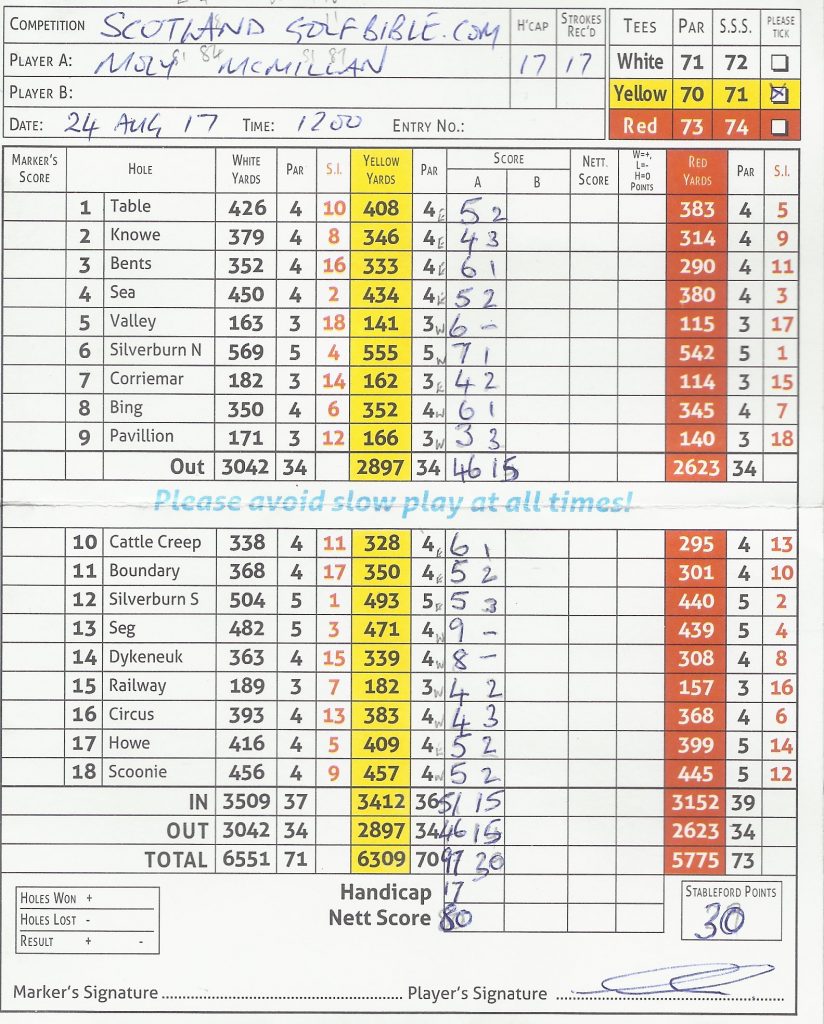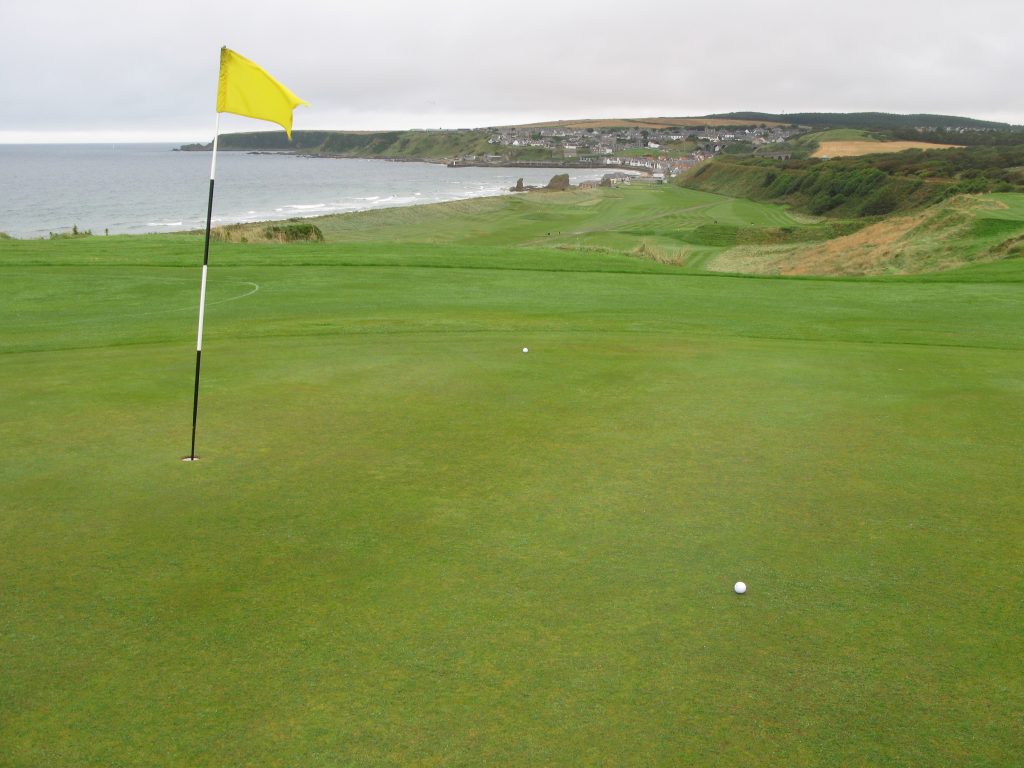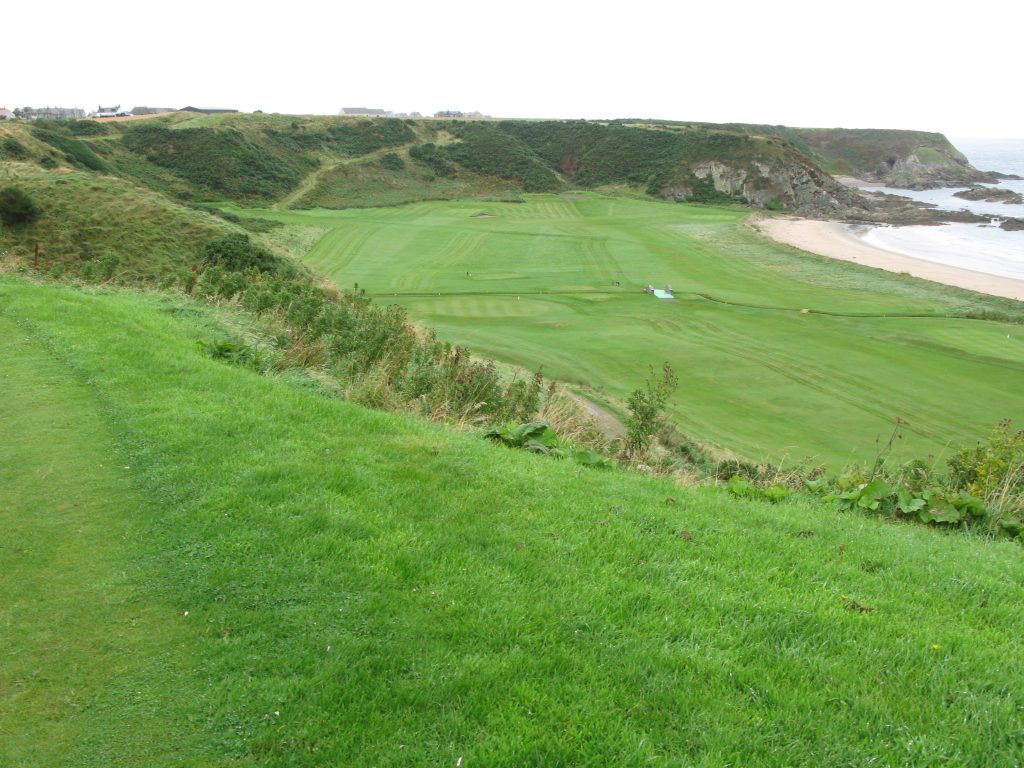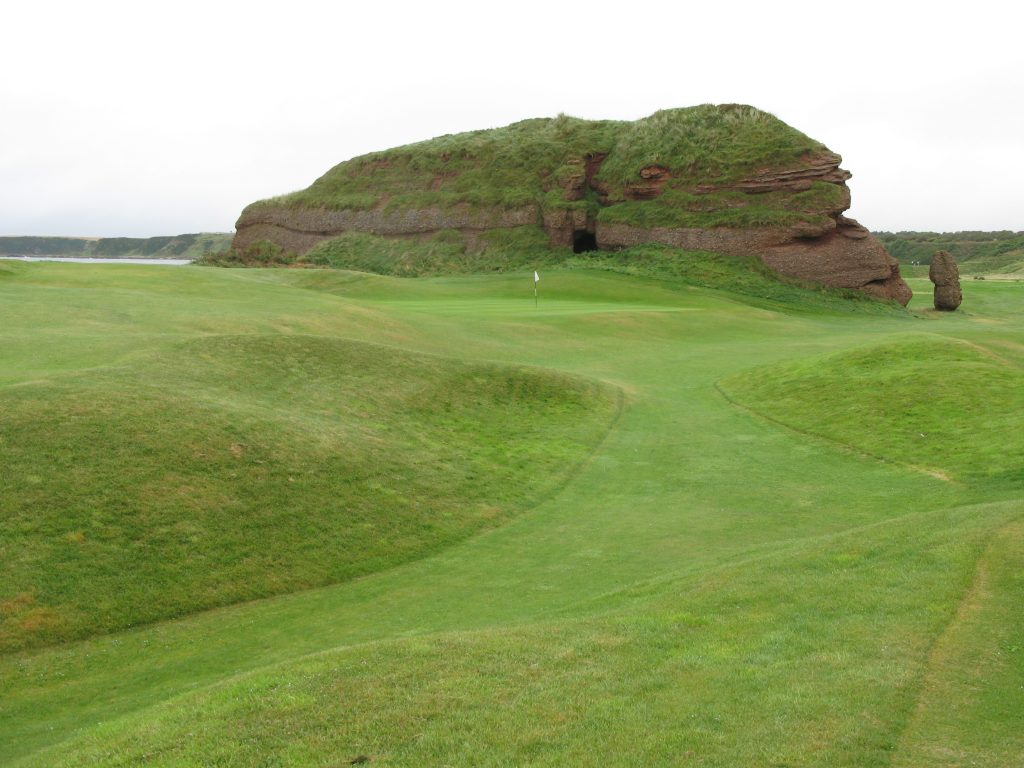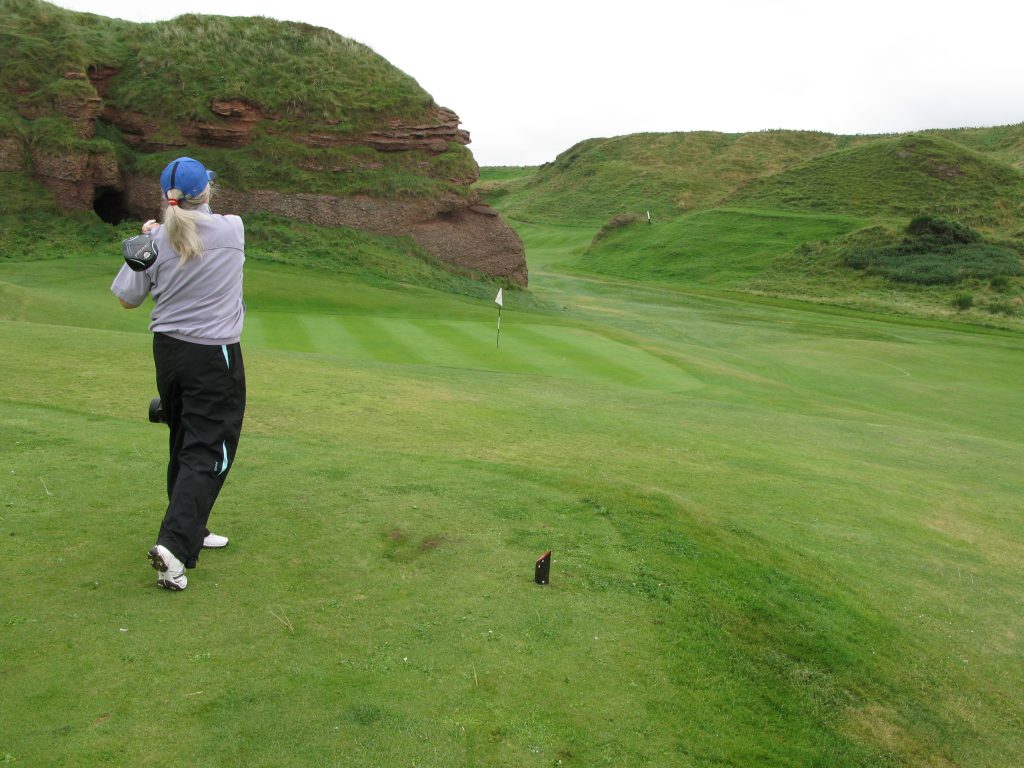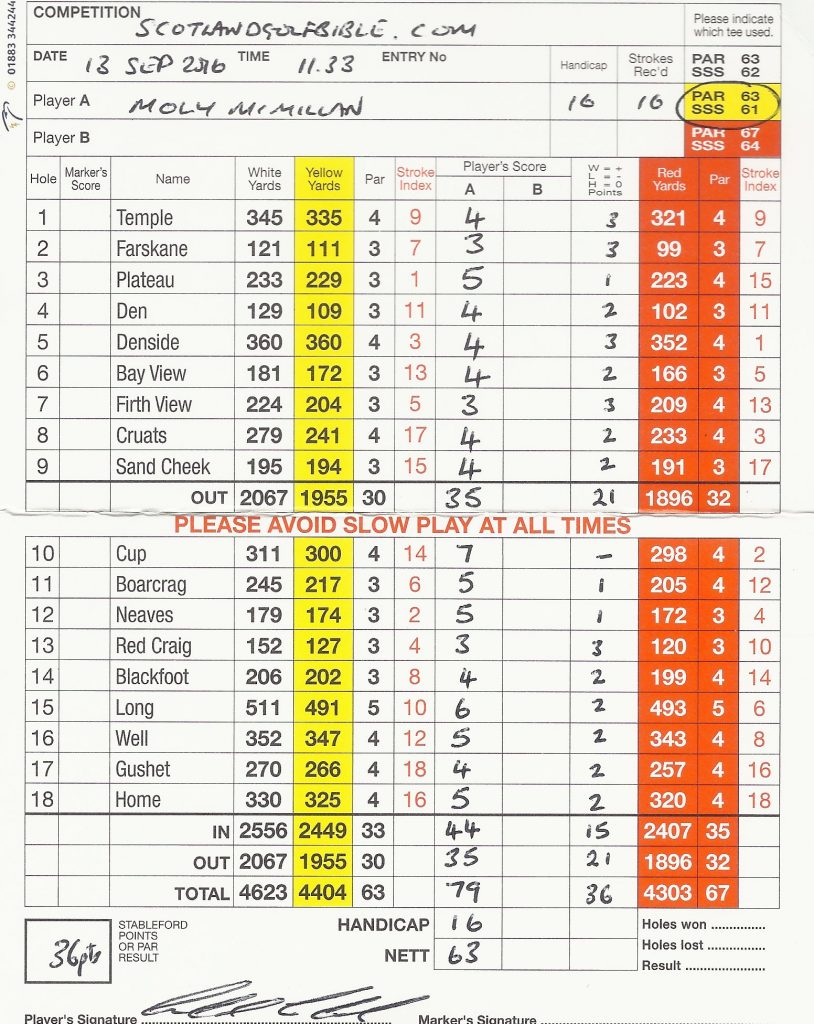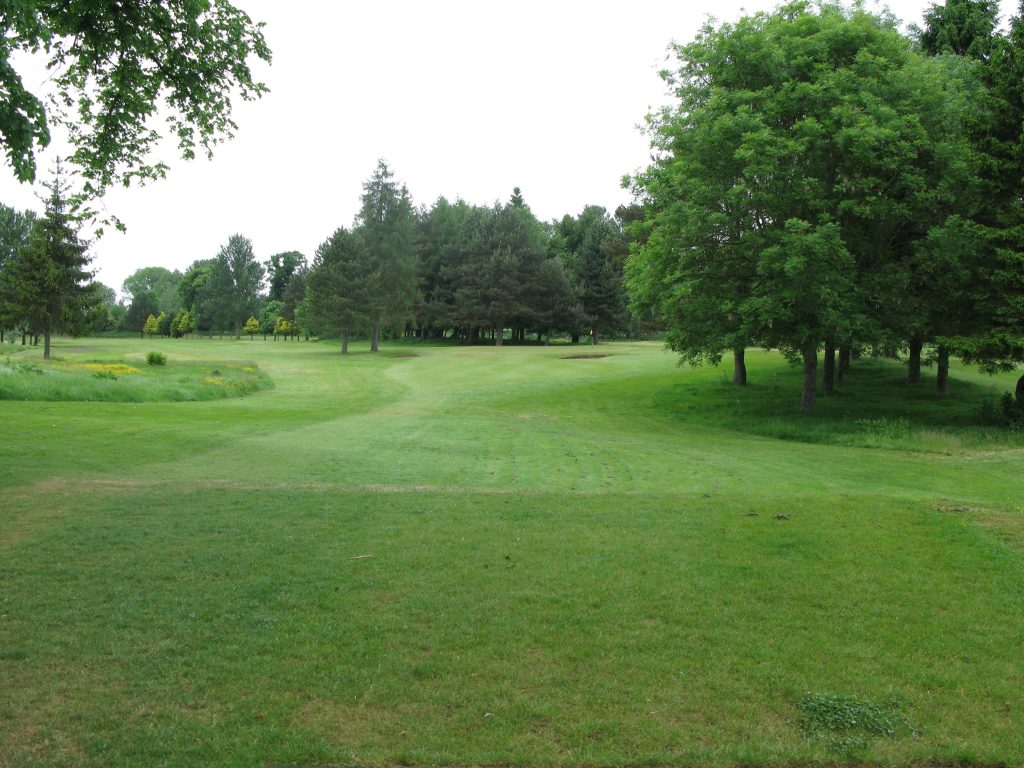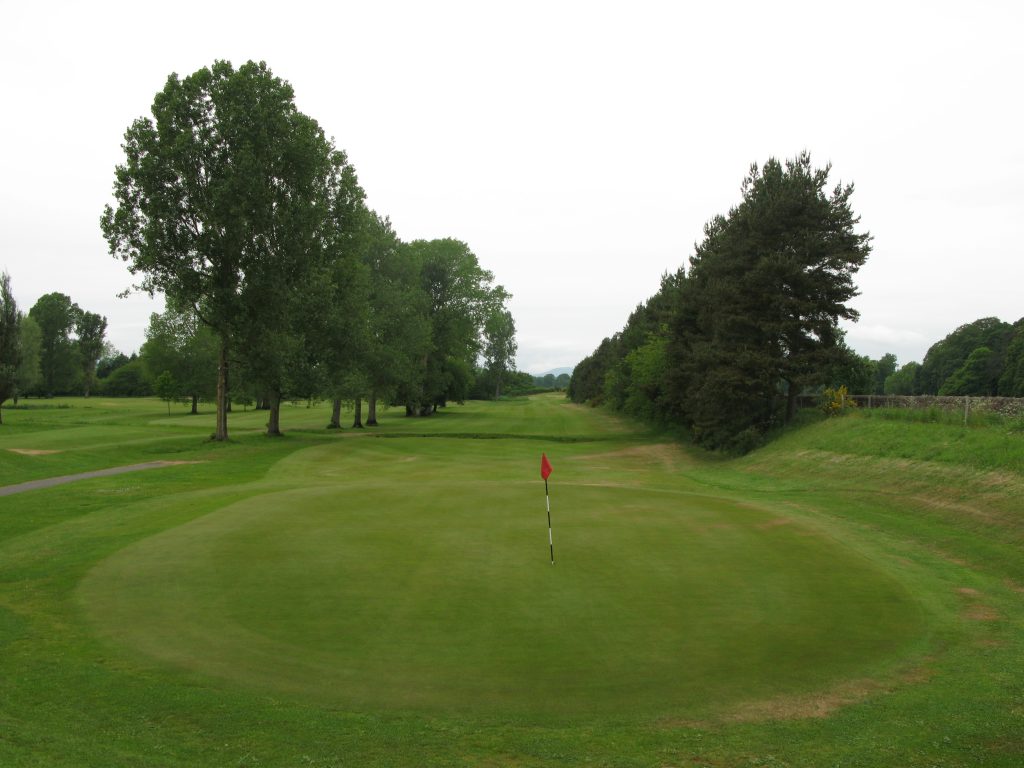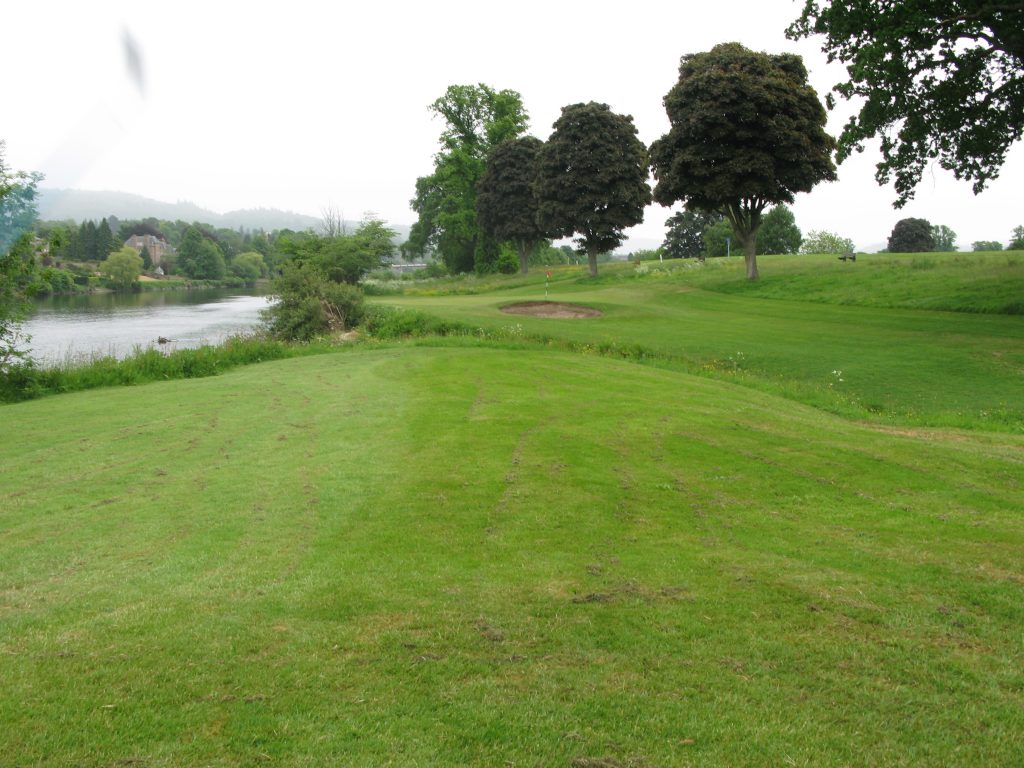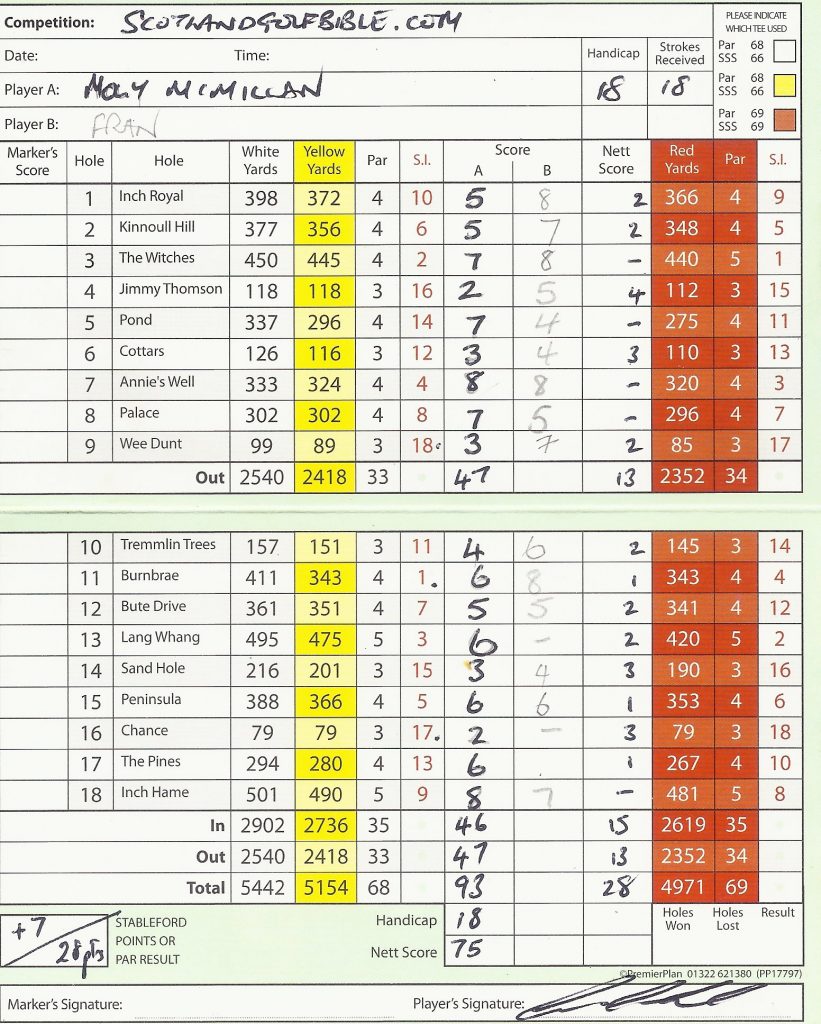Easy walking freshwater “island” course on the River Tay in Perth ideal if you are a trainspotter!
Summary: Cost £25. Par 68. Score 95. Value (out of 5) – 2.5.
The “King Jimmy” golf club was founded in 1858 and initially played on North Inch; it was named because King James VI had played golf on the “Inches”, the public land for common use along the River Tay. Golf can actually be traced back 500 years in Perth and this in covered in an earlier blog here.
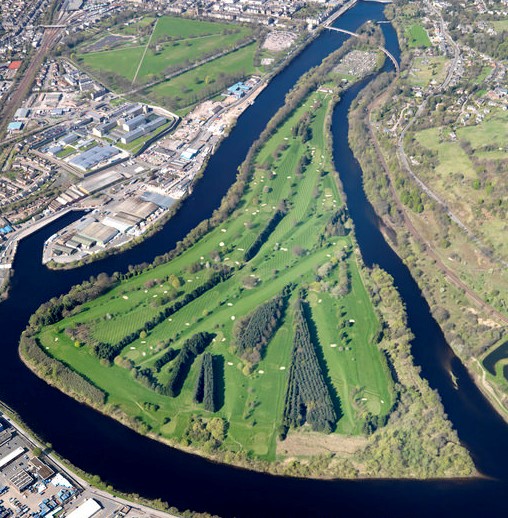
Moncreiffe island, home of the “King Jimmy” golf club
The club relocated to Moncreiffe Island in 1897, to a course designed by ‘Old’ Tom Morris, and is believed to be the only freshwater island course in the UK.
This presents a challenge for any visiting golfer, as the only access to the course is by using the narrow walkway across the railway bridge, accessed by steep stairs on either side of the bridge. The walk from the nearest public car park is around 500m.
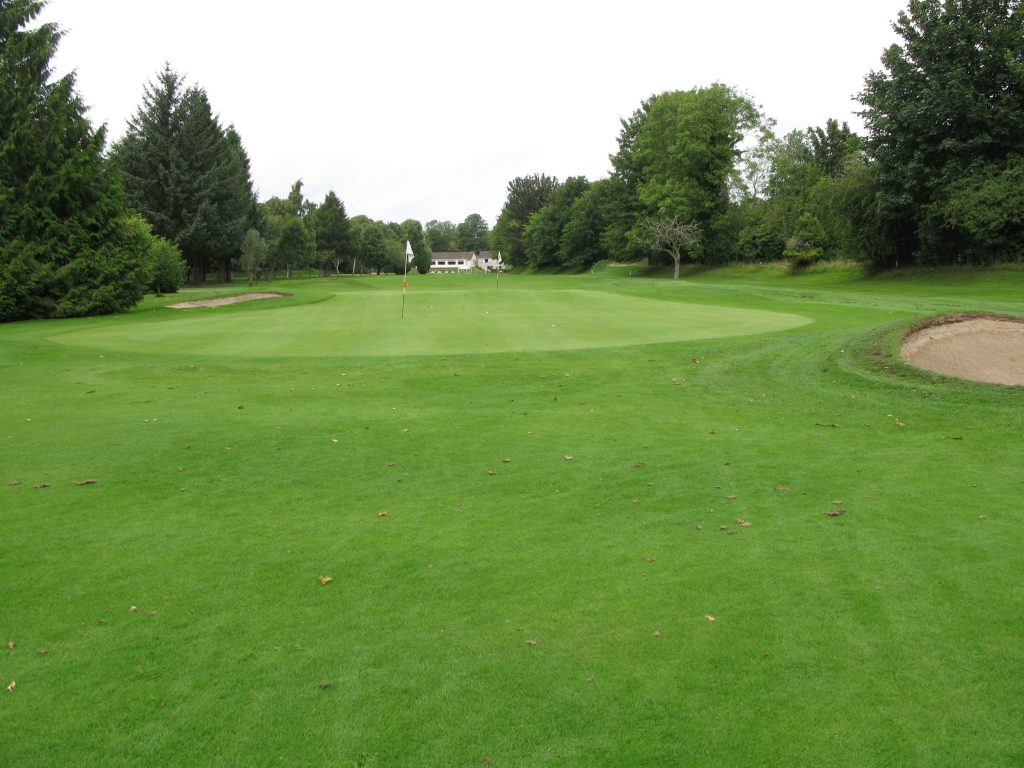
The double green on the 1st/4th with King James VI club house in the background.
The course is very flat and its lack of undulation makes for a fairly repetitive round with many holes looking the same. Although I played in late August after a relatively dry spell the course was very soft and preferred lies would have been appropriate. I understand that the course is impacted significantly after rainfall. This softness made the course play much longer than its stated yardage.
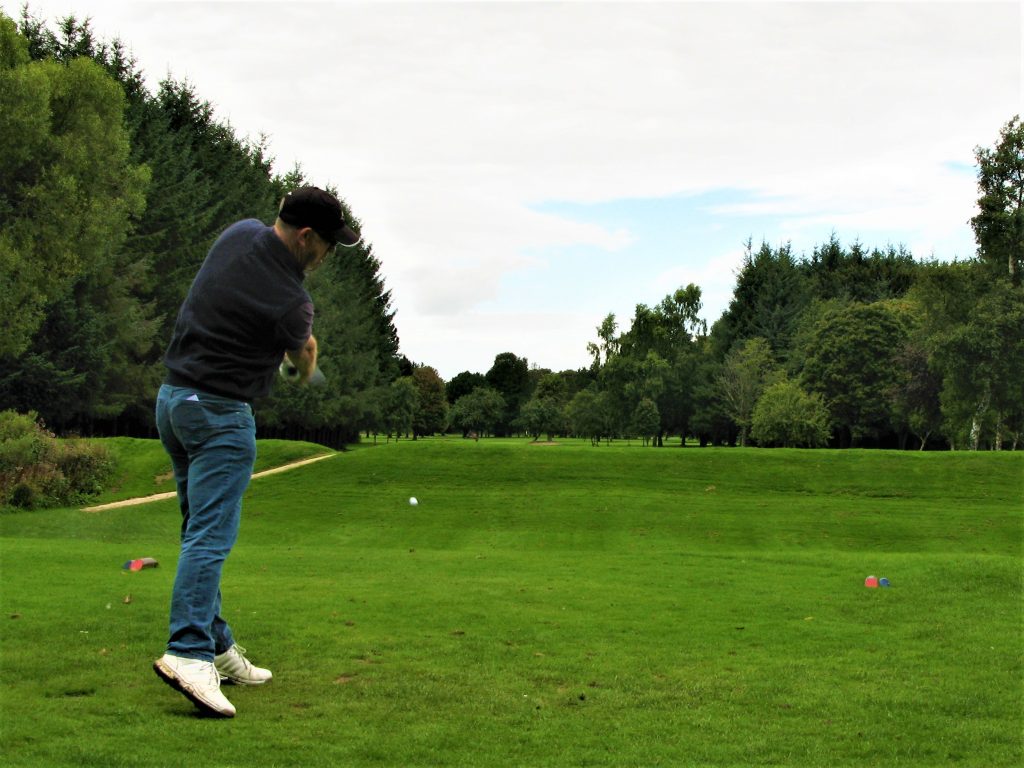
Moly driving at the tree lined short par 4 12th hole
The very lush grass also meant that balls were easily lost in the short semi rough, in fact I found 3 balls sitting in the open; make sure you get a good line on the ball after each shot.
The greens were the best feature of the course, closely followed by the lush fairways. The tees would benefit from some work. The main hazards are the course boundaries and some majestic tree lines.
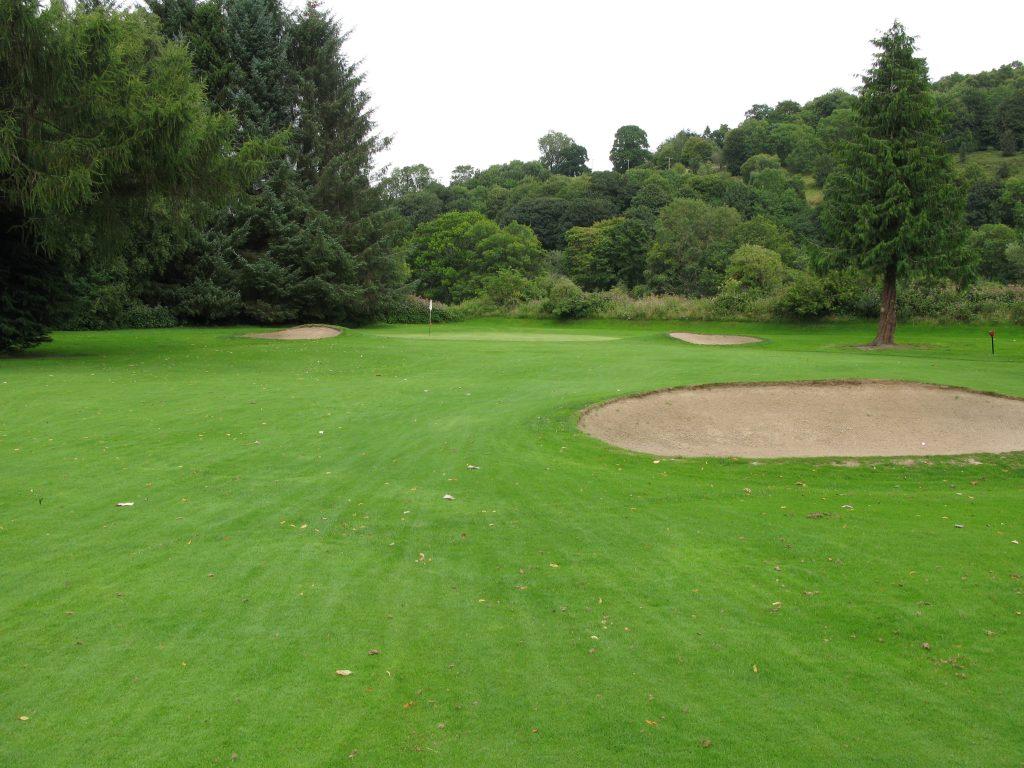
The 8th green, typical of the scenery at King James VI in Perth
The most memorable holes were those played over a grassy dyke built into the 11th and 13th holes, where it’s important to know your yardages. The dyke is almost 50 yards in front of the 11th green, so make sure you take enough club.
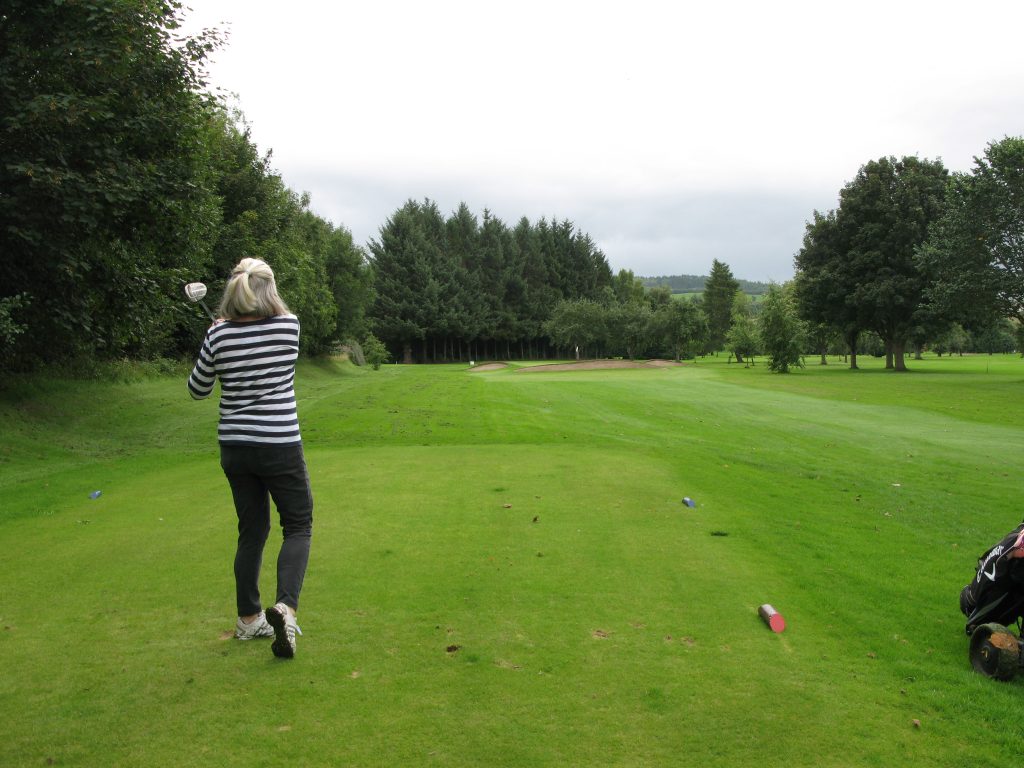
Fran, my playing partner, at the par 3 5th hole.
I played with Fran and we both had good and bad patches in our round. My highlight was reaching the 423 yard par 4 18th green in 2 blows. Pity about much of the rest.
If you do plan to play here, I strongly recommend using a half set carry bag and hiring a trolley from the club.
Key Facts
Course Type: Links
Par 68 (1 par 5s, 12 par 4s, 5 par 3s)
Distance (yellow): 5684
Moly’s Gross score: 95.
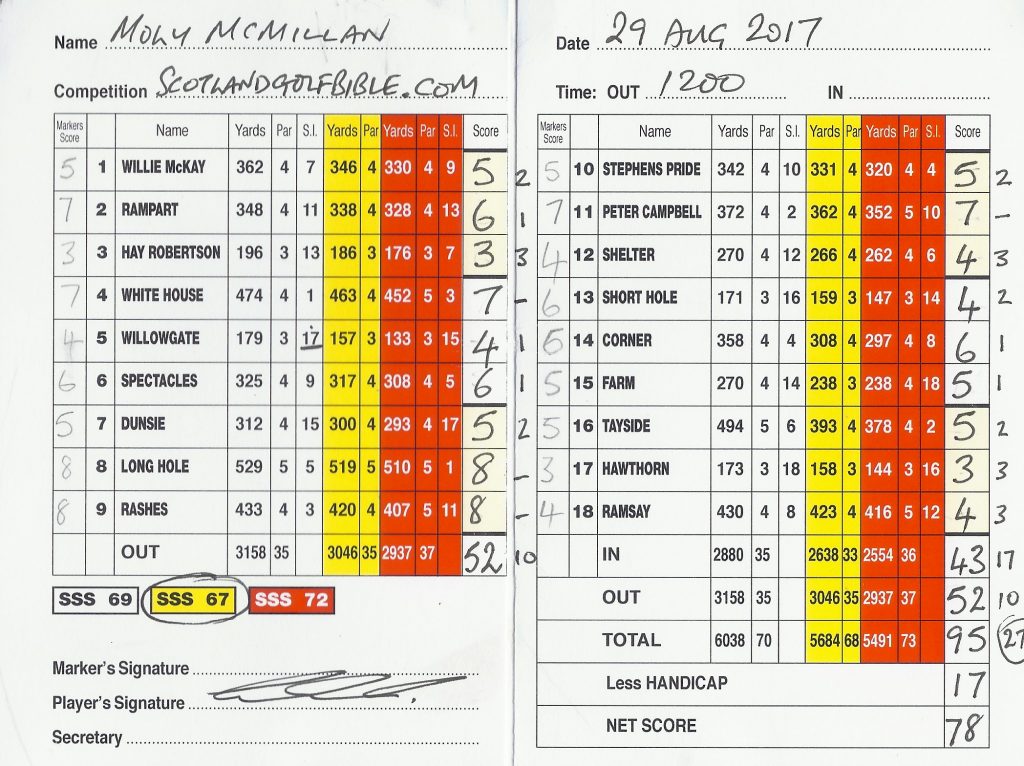
Moly’s King James VI scorecard – 95 for 27 points (off 17 hcp)
